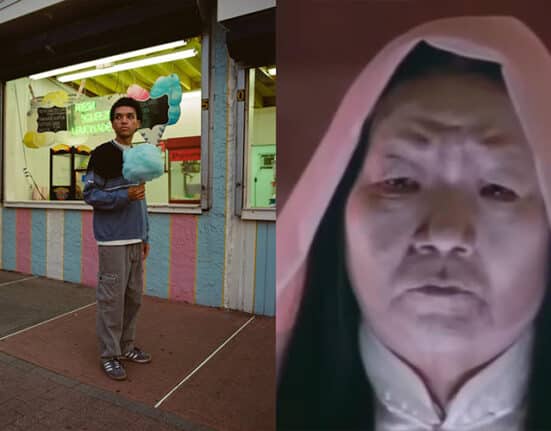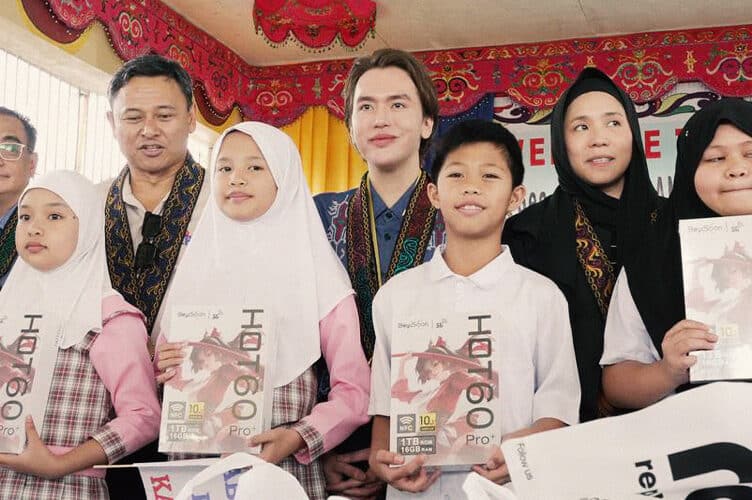HORROR is often ranked at the bottom of the genre hierarchy. Award-giving bodies such as the Oscar tend to favor ‘important films’ like heavy dramas about serious issues, celebrity biopics, and domestic narratives. In fact, as of 2024, only 6 horror films have been nominated for the Best Picture category, a small number considering the Academy Awards’ beginning 95 years ago.
For many mainstream critics, the horror genre lacks the dramatic complexity that is present in its counterparts, often capitalizing on cheap thrills instead of the artistic merits. The blood, gore, and violence—the primary elements of horror— were deemed to be utilized in an exploitative manner, more for shock than narrative value.
But although panned by critics, many film scholars have expressed appreciation for horror. While critics are looking for complexity in the technical aspects such as cinematography, production design, musical score, etc., the film theorists approached horror through its cultural and psychological merits.
One particular interest among them was horror’s paradoxical effect:
If we hate violence in real life, then why do we love seeing it on screen?
If we gag at the sight of carnage, then why do we celebrate gore?
If blood makes us squeamish, then why do we cheer for the characters as they get more covered with it?
If horror incites fear— a strong negative emotion— then why do we seek it?
Turns out, there’s much more to the genre than serial killers and scream queens. Horror is the reflection of our cultural biases and prejudice, a subset of visual art that challenges established social norms as well as reinforces it. Horror is the fairytale of the genres— not for its knight in shining armor and happy endings— but in the sense of cautionary tales about big bad wolves lurking in the shadows.
Robin Wood, an English educator and critic, put it more precisely:
“Horror films are our collective nightmares.”
Abjection and Social Otherness
‘Why are we afraid?’, asked Julia Kristeva, a Bulgarian-French literary critic and philosopher. This is what she sets out to answer in her book Powers of Horror: An Essay on Abjection, drawing from Freudian and Lacanian psychoanalysis.
Coined by Kristeva, the term ‘abjection’ is a psychological, linguistic, and philosophical concept that refers to an object that is a source of unpleasant emotions, namely fear and disgust. Fecal matters and bodily wastes can be considered as abject. A spoiled milk can also be abject, just as much as the people practicing cannibalism.
According to Kristeva, our concept of abject arises from the boundaries set by our culture— what’s normal and what’s not? This idea was borrowed from Jacques Lacan’s ‘Mirror Stage’, which tells us that as infants, we do not yet have a concept of self and identity (pre-mirror stage). We do not know and care about what is right or wrong. We don’t have values yet. We don’t yet find bodily wastes disgusting as evident from drinking our mother’s milk.
The moment we see our reflection on the mirror (mirror stage) is the moment we first form our identity. It is succeeded by the process of ‘enculturation’, in which we begin to learn the traditional content of our culture to assimilate to its practices and values. This is where we get our concept of right and wrong, what is considered normal and not normal, and who we are and who we’re not. Enculturation is putting ourselves inside a box with clearly defined boundaries.
And those that are not part of the box, those that go beyond the boundaries, are considered abject. They are something to be feared, to be gross at, because they’re not us. They’re not normal.
And so, we begin to fear.
Horror’s strength lies in the use of social and cultural taboos of our society. We’re taught not to murder and consume a fellow human being, so of course, we’d find the cannibals of Wrong Turn franchise scary. But the same practice is viewed as an act of honor to some indigenous tribes of the world. Eating a dead relative for them is seen to be a source of respect.
An abject is also not limited to practices and values alone, but also includes minority groups and those who are often marginalized in a society. These people are considered as the ‘social others’,
Take for example, the much celebrated horror film by Ti West, X (2022). The main antagonist in the film was Pearl, an old psychopathic ruralite who began murdering a group of filmmakers due to her sexual frustration. The film’s source of horror is Pearl, specifically the decay of her body due to old age.
This exemplifies America’s marginalization of old people— in this case, old women. In a patriarchal society where women’s appearance takes precedence over her other talents, old women are considered as ‘others’, their appearance treated as an affront to the beauty standards that the culture holds.
A Glimpse to Filipino Prejudice and Cultural Anxieties
The concept of abjection might have started in the West, but its application extends to other cultures, even to the Philippines. Our horror films can be analyzed to get a sense of our national anxieties, our norms and taboos, and even our tendency to marginalize a certain group of people.
For instance, think of the cultural impact of Chito Roño’s Feng Shui. We have a whole generation of citizens who, even decades later after the film’s release, are still afraid to accidentally look into a bagua’s mirror. The click-clack-click of Lotus Feet’s shoes became so iconic that it was parodied to death in Philippine television.
But looking closely at the film, we begin to ask: why are we afraid of it so much? What makes Lotus Feet and the bagua extremely scary?
Applying the things we learned earlier, we realized that Feng Shui contains elements of Chineseness— such as the belief in fortune that comes from the bagua and the practice of footbinding (Chinese custom of tightly binding the feet of young girls as a sign of opulence, rendering them unable to walk). These elements differ greatly from the Filipino traditions and practices, which mostly adheres to Christian beliefs. As a consequence, the Chinese elements contained by the film seemed to us more eccentric and terrifying. It taps into our anxiety of dealing with something that is not part of our culture, and gives a picture on how we tend to ‘other’ the Chinese minority that is present in our country.
Another noticeable feature of Filipino horror is its tendency to portray powerful women as monsters. Urban legends and horror folktales always feature a monstrous feminine: the ghost of the Balete drive is a white lady who haunts the place after she was raped and killed during the Japanese colonization; the pretty lady who lives in the heart of the forest is a manananggal who transforms during the night; and, if it’s an elderly woman who lives in the forest, then she’s portrayed as a witch or a mambabarang. Our tendency to use women as monsters in horror speaks volume about the patriarchal view that dominates our culture. When male values and physiognomy is the default of a society, then femininity and womanhood are most likely to be alienated.
Why We Love Horror
If horror reminds us of all the things we fear and hate as a society, then why do we love it? Why do we like telling our classmates stories about that one girl who died on the school premises and now haunts the hallways? Why do we anticipate the horror specials by magazine shows during Halloween? Why do we wait in long lines just to see the horror films in end-of-the-year film festivals? Isn’t exposing ourselves to the things we consider abject a torture? Why do we do it?
The answer is simple: horror helps us negotiate with our fears.
Like what we’ve stated in the beginning, horror is the genre of cautionary tales. Yes, it exposes us to things that make us uncomfortable. It shows us monsters that await past the boundaries we have set. But it also tells us what to do to avoid falling into these traps.
If you don’t like to be haunted by the dead girl, then you shouldn’t play with Ouija boards and tempt the supernatural.
If you don’t want to be victimized by a roaming serial killer, then you should be at home late in the night, not out on the streets.
If you don’t want to be targeted by a witch, then maybe you should respect rural traditions.
Horror helps a culture reinforce its traditions and beliefs. It teaches us what and how to fear. Then, when it finally holds us in the neck, it eases our anxiety by showing us that there is a way to beat the monsters.
In short, horror is used to maintain the status quo.
Yet like any other art, horror can also be weaponized to challenge it, to present an alternative cautionary tale that rocks the stability of the ideas we subscribe to.
The 2024 horror film I Saw the TV Glow is an example of this. Where previous horror films present queer people as something to be feared because they are not subscribing to the norm, A24’s masterpiece subvert the narrative. It redirected the abject away from the queer characters, and toward the suffocating environment that doesn’t allow individuals to be who they are.
The film is an indicator that times are changing. The narrative about queerness being evil is now confronted as an act of oppression rather than of truth, posing a challenge to the dominant ideology influenced by heteronormative ideals.
Horror might not be everyone’s cup of tea, but it shouldn’t be regarded as the lesser of the genres. It might be filled with monsters but they only show us nothing more than our very own reflections.
How useful was this post?
Click on a star to rate it!
Average rating 0 / 5. Vote count: 0
No votes so far! Be the first to rate this post.
We are sorry that this post was not useful for you!
Let us improve this post!
Tell us how we can improve this post?






